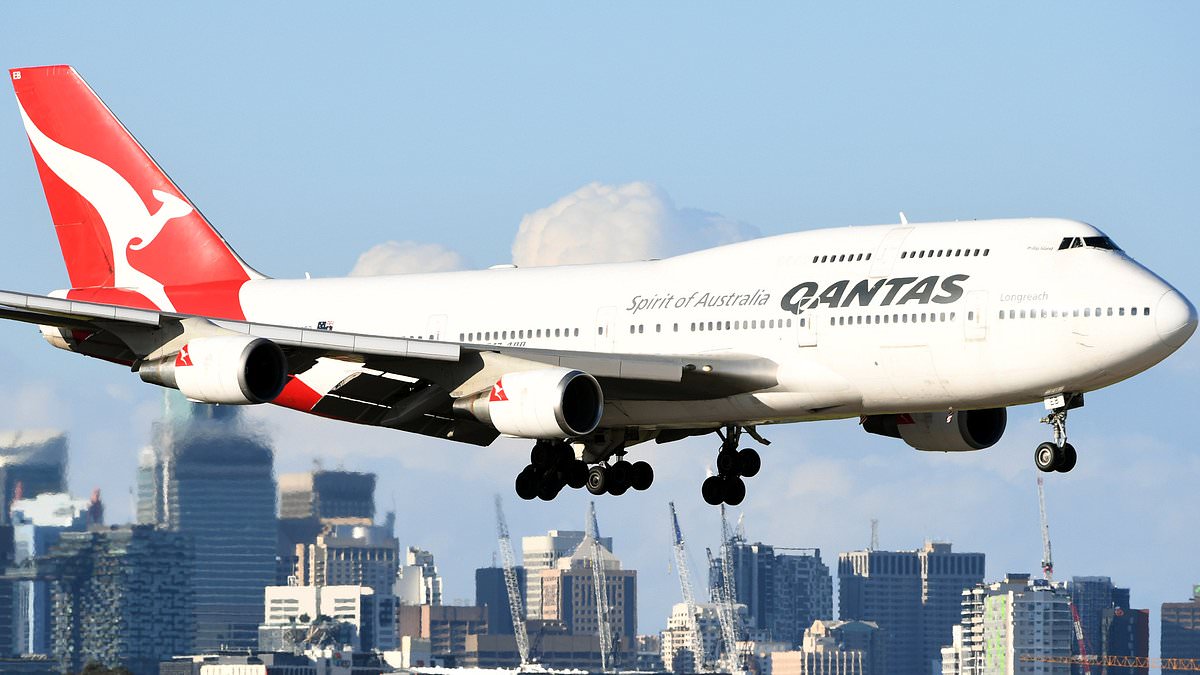A Qantas trainee pilot flying a Boeing 737 plane with over 200 passengers onboard fainted just moments after landing.
The incident occurred on Qantas flight QF804, which left Canberra Airport just after 6pm and landed in Sydney just before 7pm on Monday.
Of the 200 people onboard, 113 were passengers, plus eight crew and three pilots.
The trainee reportedly told his first officer he felt unwell shortly before fainting.
A second pilot, a check captain who was there to supervise the journey, took over and was able to safely taxi the plane to a gate at Sydney’s T3 terminal.
Paramedics treated the trainee pilot while passengers disembarked without issue.
Aviation expert and Director of Carter Capner Law, Peter Carter, told Daily Mail the pilot would be unable to resume flying until he was recertified.
‘Airline pilots must, in any event, undergo annual medical examinations by a designated aviation medical examiner (DAME),’ he explained.
Aviation expert and Director of Carter Capner Law, Peter Carter, told Daily Mail the pilot would be unable to resume flying until he was recertified.
‘Airline pilots must, in any event, undergo annual medical examinations by a designated aviation medical examiner (DAME),’ he explained.
Mr Carter said there were strict regulations in place to monitor pilots’ health, with the Civil Aviation Safety Authority (CASA) able to revoke their licences if necessary.
‘Pilots must ground themselves if they have a medically significant condition and notify their designated aviation medical examiner (DAME) or CASA if the condition lasts longer than seven days,’ he said.
‘The standard of testing is higher for airline pilots than, for example, private pilots.’
‘A medical condition does not of itself prevent the medical certificate from being issued. It’s a question of whether the condition poses a safety risk. CASA may impose conditions on the pilot’s privileges, for example, by limiting duty times.’
Qantas said that all protocols were properly followed in a statement.
‘Our pilots followed standard operating procedures when one pilot suffered a medical incident following landing in Sydney,’ a spokesperson said.
‘The safety and wellbeing of our passengers and crew is our priority, and we’re supporting the individual following the incident.’
The matter was reported to the n Transport Safety Bureau (ATSB) who confirmed they had investigated.
‘The operator and pilot reports have been added to the ATSB’s database, but the ATSB is not investigating this event further,’ a spokesperson said.
‘As reported to the ATSB, after a safe landing, and while the aircraft was stationary on the tarmac, the pilot flying felt unwell and was incapacitated for a short time.
‘Two other flight crew were in the cockpit, took control and taxied to the gate without incident.’
In 2023, a QantasLink flight from Sydney to Hobart encountered a serious safety risk when the first officer experienced a medical episode during landing, showing symptoms similar to hypoxia.
According to the ATSB, the incident was linked to poor cabin air quality, caused by a chlorine-like odour emanating from the cockpit’s air-conditioning vents.
‘At about 100 feet above the runway elevation, the first officer experienced difficulties keeping the aircraft lined up with the runway centreline,’ the ATSB report stated.
Despite the challenges, the flight landed safely with 54 passengers and five crew members on board.
The plane involved in the incident was retired in September 2023.
